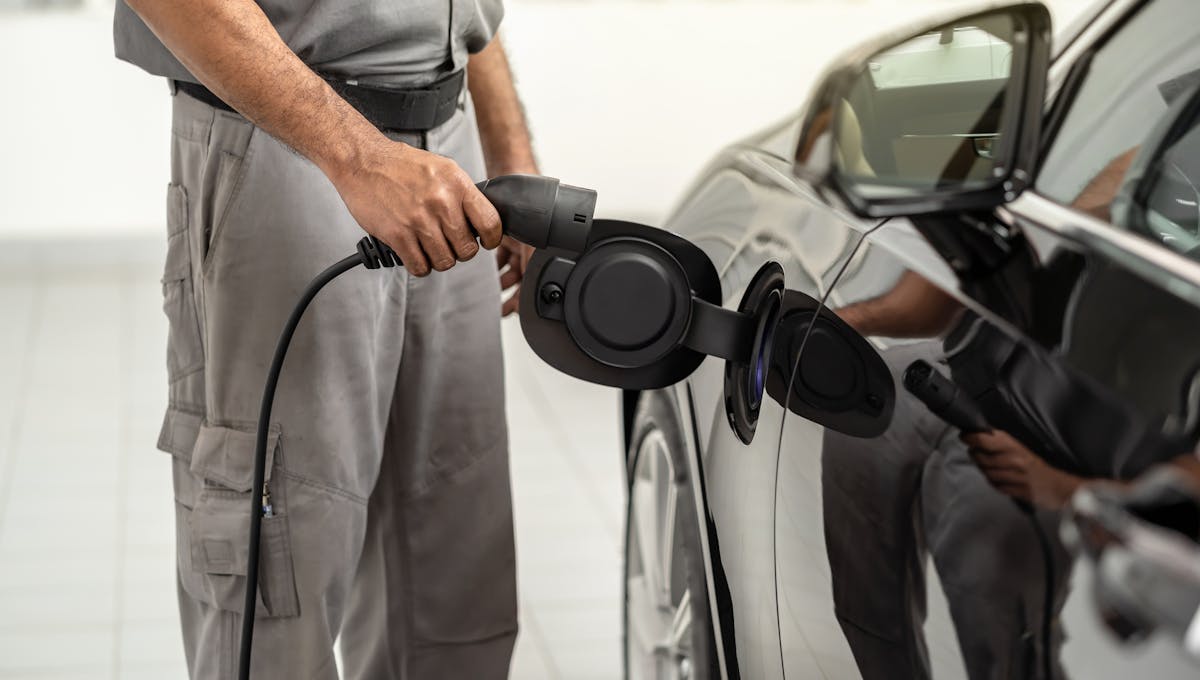Electric Car Service, Maintenance, and Repairs Explained
Electric cars might seem like some complex, new-fangled technology, but in actual fact they’ve been around since the Victorian era.
In fact, electric cars are a lot simpler than their petrol and diesel counterparts. There’s fewer moving parts, and maintenance is both easier and more cost-effective.
In this article, we explore which parts of an EV need servicing, where you can get them serviced, and what general maintenance you can carry out yourself.

Which parts of an electric car need servicing?
As we’ve already suggested, electric cars are less complicated than petrol or diesel engines. In the latter, you can expect to find more than 200 moving parts in the drivetrain alone. An electric car, like a Tesla Model 3, has just 17.
So, what does this mean in practice? Well, for starters, electric cars don’t need oil changes. Because there’s a lot less moving parts, there’s also a lot less lubrication required.
Of course, your electric car will still need a quick check over with a diagnostic tool to pick up any fault codes (though we imagine there will be a lot less that can go wrong with less moving parts). Any faulty battery cells should show up in this part of the examination.
The technician will also give the high voltage electrical cables an inspection to make sure they’re all in-tact. These are typically well-protected from road debris anyway, so it’s unlikely there will be any issues here.
Because most electric cars don’t have gears, there’s also little to check in the transmission department. Gear oil may need replacing, albeit infrequently.
Much like traditional cars, however, EVs have a cooling system. In this case, its role is to keep the battery at the optimum temperature. Usually, the technician will inspect the liquid cooling and provide a top-up if necessary.
Brake fluid will need to be changed, usually every two years. However, because EVs use regenerative braking, you are likely to need less brake disc and pad replacements. This is of course if you have regenerative braking at the ‘max’ setting and stick to mostly ‘one pedal driving’ around the city.
EV technicians will also examine the suspension and steering components, and tyres may need to be replaced quicker than you’d expect on a traditional ICE. This is because EVs generally accelerate a lot quicker - and who doesn’t want to show off the sportscar performance of a Tesla Model S?
Where can I service my electric car?
They may not be as mechanically complex, but because EVs have a very high voltage electrical system, they generally require specialist attention. The best option for most EV owners is to take your EV to be serviced with your registered main dealer. This also ensures everything is under warranty should anything go wrong.
Electric cars like the Nissan Leaf have now been on the market for over a decade and the Renault Zoe is fast approaching this milestone. Naturally, more and more qualified EV technicians are popping up around the country.
If you’re out of warranty, or you need a quick checkover, check out the Hybrid and Electric Vehicle Alliance for a list of qualified technicians near you.
What are the service intervals of an EV?
Again, although EVs are technically simpler, they generally have comparable service intervals to petrol and diesel cars.
This is because many of the items that EVs need to keep them road safe (brakes, tyres, and suspension) still degrade over similar timeframes. In fact, tyres are likely to degrade even faster due to the rapid acceleration of EVs.
Typically, manufacturers will set a recommended interval for servicing based on time and distance driven.
The typical service interval for a Renault Zoe is every year or 18,000 miles driven, whichever is first. The Porsche Taycan should have a full service every two years or 20,000 miles driven.
Interestingly, two years ago Tesla actually got rid of the requirement for an annual service, though they still recommend periodic check ups for things like brake fluid, pads, calipers, filters and air conditioning. It remains to be seen whether this will actually translate to more satisfied customers and shorter waiting times.

Are there any exclusions when servicing an EV?
When it comes to servicing, there are a number of exclusions - items not covered under the regular service charge that you will have to pay extra for.
Any consumables that need replacing, such as tyres or brake pads, are an additional cost to you. Although you can purchase all-inclusive servicing packs from manufacturers that will include the cost of the replacement of items such as tyres and wiper blades, these can be expensive.
How can I maintain my electric car’s battery?
Although EVs are a lot simpler to maintain and service than traditional internal combustion engine cars, there are a couple of things to bear in mind when it comes to extending the life of your battery.
All electric car batteries are based on some form of lithium-ion technology. Although most new EVs can use fast or rapid EV charger types, most EVs will slow down the rate at which they accept charge considerably after the 80% mark. This is because batteries can be damaged if they accept charge too quickly.
One way to extend the life of your battery is to charge it to no more than 80% (some cars offer a setting that enables this automatically) and discharge it no lower than around 10%. This should keep the battery operating at maximum efficiency, and prolong the life of the battery for years to come.
Another great reason to charge in ‘partial’ cycles is to maximise the benefits of regenerative braking. The car can only utilise regenerative braking when the battery has room to accept charge, so partial cycles mean more ‘free miles’ and less brake wear.
What about hybrid servicing?
Hybrids have batteries - so they must be cheaper, right? Unfortunately, while hybrids do manage the ‘best of both worlds’ when it comes to range and convenience, they might just be the exact opposite when it comes to servicing.
Hybrid cars contain internal combustion engines and batteries. This makes them somewhat more complex than both EVs and ICEs. In other words, the complexity of a hybrid means that servicing can often end up being more expensive than both EVs and ICEs!
Conclusion
Electric cars are a lot simpler than petrol or diesel cars. This means that on the whole they’re cheaper to service, maintain and repair. Sadly, electric car insurance isn’t any cheaper yet, but as economies of scale are making EVs cheaper to manufacture, it can’t be far behind!
For more information on how you can save with an EV, check out our posts on EV tariffs and electric car charging at home. Or, if this has already whet your appetite, why not take a look at our lists of the best electric cars and best small electric cars?


